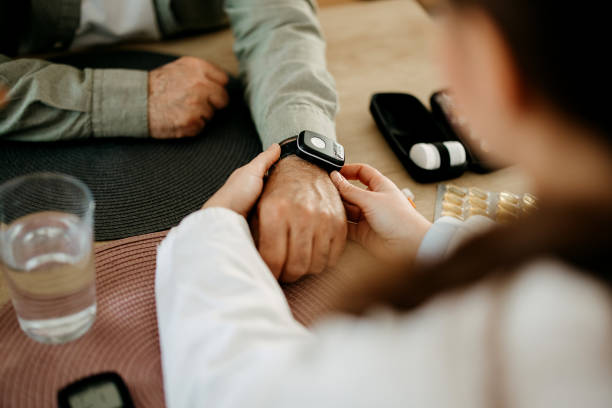The Future of Healthcare: Exploring Remote Patient Monitoring
As technology continues to advance, the healthcare industry is evolving to deliver more personalized, efficient, and accessible care. One of the most promising developments in this transformation is remote patient monitoring (RPM), a method that allows healthcare providers to track and manage patients' health outside traditional clinical settings. This article will delve into the concept of RPM, how it functions, and the potential benefits it brings to both patients and the healthcare system.
As technology continues to advance, the healthcare industry is evolving to deliver more personalized, efficient, and accessible care. One of the most promising developments in this transformation is remote patient monitoring (RPM), a method that allows healthcare providers to track and manage patients' health outside traditional clinical settings. This article will delve into the concept of RPM, how it functions, and the potential benefits it brings to both patients and the healthcare system.

What is Remote Patient Monitoring?
Remote patient monitoring (RPM) is a healthcare approach that uses technology to collect, monitor, and transmit health data from patients to healthcare providers in real-time. This data can include vital signs, symptoms, medication adherence, and other critical health information. RPM empowers healthcare providers to observe patients’ conditions continuously without the need for them to visit a clinic or hospital, making it especially useful for those managing chronic conditions.
How Does Remote Patient Monitoring Work?
RPM relies on a variety of digital tools and devices to gather health data. These can include wearable sensors, medical devices, and mobile apps that capture information such as heart rate, blood pressure, glucose levels, oxygen saturation, and more. Once collected, this data is transmitted to a centralized system, where healthcare professionals can review it, analyze trends, and make informed decisions about patient care.
RPM is particularly valuable for managing chronic diseases such as diabetes, heart disease, and respiratory disorders. It allows patients to remain in the comfort of their own homes, reducing the need for frequent doctor visits. This aspect of RPM is especially beneficial for individuals with mobility challenges or those who live in remote areas, where access to healthcare services may be limited.
Key Benefits of Remote Patient Monitoring
Remote patient monitoring offers a range of advantages for both patients and healthcare providers. These benefits include:
1. Enhanced Chronic Disease Management
RPM allows healthcare providers to monitor patients' health continuously and in real-time. This helps identify potential issues early, allowing for prompt intervention before problems become severe. For patients with chronic conditions, such as diabetes or heart disease, early detection can significantly reduce the risk of complications.
2. Greater Convenience for Patients
RPM eliminates the need for frequent in-person visits to the doctor. Patients can check their vitals, report symptoms, and receive medical advice from home, which is particularly valuable for individuals who struggle with transportation or live in rural locations. It also reduces the strain on patients, saving time and energy.
3. Lower Healthcare Costs
RPM can lead to substantial cost savings by reducing the number of hospital admissions, emergency room visits, and readmissions. By providing continuous monitoring and early intervention, RPM helps prevent costly complications, which can be financially burdensome for both patients and healthcare systems.
4. Improved Health Outcomes
With continuous data flow, healthcare providers can better track the effectiveness of treatments and adjust care plans as needed. The ability to act swiftly based on up-to-date information can significantly improve health outcomes, particularly for patients with complex, ongoing health needs.
The Future of Healthcare: The Role of RPM
The role of remote patient monitoring is poised to expand significantly in the coming years. As telemedicine and digital health technologies continue to advance, RPM is becoming an indispensable tool for healthcare providers to deliver high-quality, accessible care. The aging population, along with the rising prevalence of chronic diseases, creates a demand for more efficient ways to manage health, and RPM can play a crucial role in meeting these needs.
RPM is also facilitating a broader reach for healthcare providers, enabling them to monitor and treat a larger number of patients without the constraints of physical space. This is particularly beneficial in times of crisis, such as the COVID-19 pandemic, when remote care has become essential for protecting both patients and healthcare workers.
Conclusion
Remote patient monitoring represents a significant shift in how healthcare is delivered. By allowing continuous tracking of health data outside the traditional healthcare setting, RPM offers numerous benefits: better disease management, enhanced convenience for patients, reduced healthcare costs, and improved patient outcomes. As technology evolves, the potential for RPM to transform healthcare becomes even more apparent. With its ability to provide timely, efficient, and personalized care, remote patient monitoring is truly the future of healthcare, helping to improve the quality of care while expanding access for all.